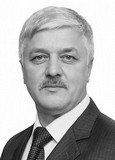Features of the influence of the factor of internal aggression on the socialization of athletes after the completion of the career
Keywords:
level of aggressiveness, kinds of sports, asocialization of sportsmen.Abstract
Objective of the study was to determine the level of aggressiveness of athletes of various specializations who have completed their careers as a factor in their asocialization.
Methods and structure of the study. 55 former athletes took part in the scientific study (2 Masters of Sports of international class, 17 Masters of Sports, 20 Candidates for Master of Sports and 16 first-class athletes). All subjects were tested according to the method of L.G. Pochebut to determine the level and direction of aggression [4]. Based on the data obtained, the correlation coefficients between the variables of aggression and the type of sports activity were determined, as well as the percentage of former athletes of various specializations with high and medium levels of aggressiveness.
Results and conclusions. It has been established that aggressive behavior is more characteristic of former athletes of cyclic sports. For complex coordination sports, martial arts and sports games, aggressiveness is not the dominant way of behavior in the process of achieving the goal. It is necessary to organize competent psychological support by coaches and specialists for athletes of cyclic sports, which will help reduce the likelihood of frustration phenomena in the latter throughout their career and after its completion.
References
Butova E.S., Demyanova L.M. Problemy sotsialnoy adaptatsii sportsmenov posle zaversheniya karyery [Problems of social adaptation of athletes after the completion of a career]. Nauka bez granits. 2018. No. 5 (22). pp. 122-124.
Krolevets Yu.L., Skrygin S.V. Mnogofaktornost sotsialnogo povedeniya v sovremennom obshchestve [The multifactorial nature of social behavior in modern society]. Moscow: Rusayns publ., 2021. 186 p.
Kuramshin Yu.F., Grigoriev V.I., Latysheva N.E. Teoriya i metodika fizicheskoy kultury [Teoriya i metodika fizicheskoy kultury]. Textbook for high schools. Yu.F. Kuramshin [ed.]. - Moscow: Sovetskiy sport publ., 2004. 463 p.
Pochebut L.G. Kross-kulturnaya i etnicheskaya psikhologiya [Cross-cultural and ethnic psychology]. Study guide. St. Petersburg: Piter publ., 2012. 336 p.
Skrygin S.V., Anurov V.L. Sovremennoe nravstvennoe vospitaniye na osnove opyta khristianskoy pedagogiki [Modern moral education based on the experience of Christian pedagogy]. Moscow: Rusayns publ., 2020. 167 p.
Skrygin S.V., Yurchenko A.L. Osobennosti psikhologicheskikh vzaimootnosheniy prepodavateley fizicheskoy kultury v vuze [Peculiarities of psychological relationships between teachers of physical culture at the university]. Teoriya i praktika fizicheskoy kultury. 2021. No. 3. pp. 53-55.
Skrygin S.V. Formirovaniye nravstvennykh ubezhdeniy u sportsmenov v protsesse trenirovochnoy deyatelnosti [Formation of moral convictions among athletes in the process of training activities] [Electronic resource]. Elektronnyy nauchnyy zhurnal. 2017. No. 3. Part 2. pp. 323-328.
Khorunzhiy A.N. K probleme sotsialnoy adaptatsii vysokokvalifitsirovannykh sportsmenov [To the problem of social adaptation of highly qualified athletes]. Teoriya i praktika fizicheskoy kultury. 2011. No. 5. pp. 42-44.


